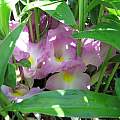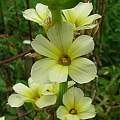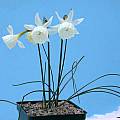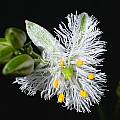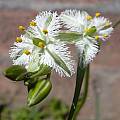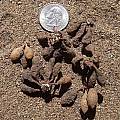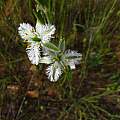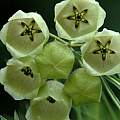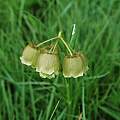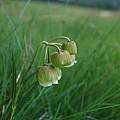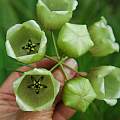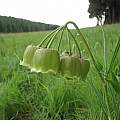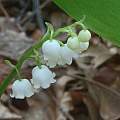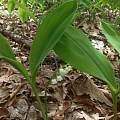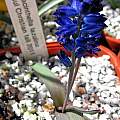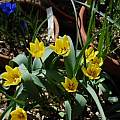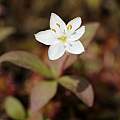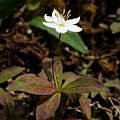This page is a random selection of wiki entries which is updated daily.You can subscribe to it as an RSS feed  The RSS feed contains 'media' data and can be used as a 'photo feed' by programs such as screen savers, slide shows and picture frames.Click to add Bulb Day to your MyYahoo page
The RSS feed contains 'media' data and can be used as a 'photo feed' by programs such as screen savers, slide shows and picture frames.Click to add Bulb Day to your MyYahoo page 
From Siphonochilus on Thursday 4th of July 2024 06:10:44 PM PDT
Siphonochilus aethiopicus is a magnificent ginger that occurs naturally in the south-eastern regions of southern Africa. It is a forest-dwelling herbaceous perennial that dies down to a rhizome and tuberous roots during the dry winter months. Sadly this plant is nearly extinct in the wild due to over-exploitation by indigenous tribes for its use in traditional medicine and magi-cultural practises.
This species is easy to grow in pots or raised beds if it is given some shade and a dry winter rest when it is dormant. It will produce its striking scented flowers during the summer months at ground level. The rhizome is also strongly scented of ginger and violets. The photo below by Rogan Roth of Siphonochilus aethiopicus growing in a raised bed demonstrates the habit of the plant nicely.
From Sisyrinchium on Wednesday 3rd of July 2024 06:06:36 PM PDT
Sisyrinchium convolutum has a large range from Mexico to Peru. Photo by Kathleen Sayce.
From Narcissus Hybrids on Tuesday 2nd of July 2024 06:29:12 PM PDT
Narcissus cantabricus ssp. cantabricus var. petunioides × Narcissus triandrus Photo by John Lonsdale.
From Trichopetalum on Monday 1st of July 2024 05:56:47 PM PDT
Trichopetalum plumosum is the only species of the genus from South America (Chile). It is 20 cm. (8in.) tall with white flowers that bloom in spring. It grows in full sun in grassy slopes of hills in well-drained neutral to alkaline soil. It is dormant in summer and may not be hardy as there are only slight frosts in its native habitat. However, Jane McGary has grown it from seed to flowering in an unheated bulb frame where it survived temperatures as low as 20 degrees F. Information courtesy of Alberto Castillo. Photo 1 by Sheila Burrow. Photos 2-3 from Osmani Baullosa. Photo 4 taken by Eugene Zielinski spring 2011 in Chile along Route 5 between Los Vilos and La Serena. The elegant flowers are small, barely 1.3 cm (1/2 inch) wide.
From Pachycarpus on Sunday 30th of June 2024 05:50:15 PM PDT
Pachycarpus campanulatus (Harv.) N.E.Br. is a slender, geophytic herb up to 750 mm high with common names of cluster bells, toad plant, fairy bell pachycarpus, and thick-fruit. The species is widely distributed mostly in the province of KwaZulu-Natal but also in the Eastern Cape, Limpopo, Mpumalanga, Gauteng and Free State Provinces. It flowers November to February. Flowers are bell-like, pale green to dull cream, becoming brown with age. Photos below were taken by Bob Rutemoeller, Mary Sue Ittner, and Cameron McMaster January 2010 in Maclear.
From Ismene Hybrids on Saturday 29th of June 2024 05:33:40 PM PDT
Ismene 'Advance' (syn. Hymenocallis 'Advance') is a hybrid of Ismene 'Festalis' backcrossed to Ismene narcissiflora. Photo taken July 2009 by Jay Yourch.
From Convallaria on Friday 28th of June 2024 05:05:39 PM PDT
Convallaria pseudomajalis W.Bartram, syn. Convallaria majuscula Greene, syn. Convallaria montana Fernald, is native to East Central U.S.A. (Allegheny Mountains, Cherokee Mountains). It is larger and more erect and forms open colonies on acid mountain slopes and in sandy woods where it grows in summer dry soils under oaks. Photos from iNaturalist taken by Ann Walter-Fromson and flowering in May in North Carolina and shared under a CC BY-NC license.
From Hyacinthella on Thursday 27th of June 2024 07:46:42 PM PDT
Hyacinthella lazulina is native to Turkey. Photo from Rimmer de Vries.
From Tulipa Species Three on Wednesday 26th of June 2024 05:17:36 PM PDT
Tulipa lemmersii Zonn., Peterse & de Groot grows near Chymkent, Kazakhstan, on dry slopes in shallow, stony soil. The plants in the photo were grown from seed collected by Kurt Vickery and are shown in their second year of flowering, in an unheated, roofed bulb house in western Oregon. It is a small plant with flowers in attractive proportion to the foliage. Photo by Jane McGary in March 2021.
From Trientalis on Tuesday 25th of June 2024 06:21:23 PM PDT
Lysimachia europaea syn. Trientalis europaea is native to the boreal regions of Europe and Asia where it grows in acidic forest and bog habitats. Rarely reaching 10 cm, it is the smallest species of the group. At sunny locations, the leaves develop an attractive bronze tinge like this plant grown in the bog garden of Martin Bohnet in southern Germany. As this is more southern than the usual range, they flower in early summer for him, probably a lot earlier than in their northern homelands.
